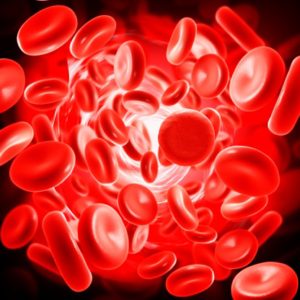Stored red blood cells (RBCs) undergo morphologic and biochemical changes with time. In a recently published study in Blood, researchers used a novel, multi-pronged approach in order to gain a better understanding of storage lesions for RBCs stored in AS-3 (a common storage solution). By combining quantitative metabolic flux analysis, structural modeling of proteins, switch-tag redox proteomics, and QconCAT technology, which quantifies the absolute amount of protein, researchers were able to examine oxidative lesions in stored RBCs in a key metabolic enzyme, glyceraldehyde 3-phosphate dehydrogenase (GAPDH). GAPDH controls glucose metabolism in glycolysis and the pentose phosphate pathway (PPP) (in pro-oxidant conditions). Oxidation of the active site of GAPDH correlated with a decrease in glycolysis and an increase in the PPP in stored RBCs, though other storage factors may be driving the increase in the PPP. In addition, irreversibly oxidized GAPDH was found in the supernatants of stored RBCs. Whether these oxidative changes in GAPDH may be prevented requires further study. However, several large, randomized clinical trials have determined that stored RBCs are safe for transfusion. These novel techniques may be quite useful if applied to other “stressed” cells such as sickle RBCs, ageing or cancerous cells to provide further insight into their metabolism.
References:
- Hess JR. RBC storage lesions. Blood 2016;128: 1544-5.
- Reisz JA, Wither MJ, Dzieciatkowska M, Nemkov T, Issaian A, Yoshida T, Dunham AJ, Hill RC, Hansen KC, D’Alessandro A. Oxidative modifications of glyceraldehyde 3-phosphate dehydrogenase regulate metabolic reprogramming of stored red blood cells. Blood 2016;128: e32-42.

